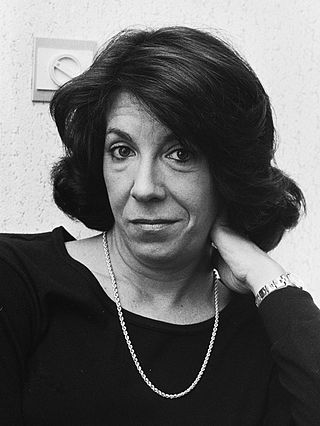Giaches de Wert was a Franco-Flemish composer of the late Renaissance, active in Italy. Intimately connected with the progressive musical center of Ferrara, he was one of the leaders in developing the style of the late Renaissance madrigal. He was one of the most influential of late sixteenth-century madrigal composers, particularly on Claudio Monteverdi, and his later music was formative on the development of music of the early Baroque era.

A madrigal is a form of secular vocal music most typical of the Renaissance and early Baroque (1600–1750) periods, although revisited by some later European composers. The polyphonic madrigal is unaccompanied, and the number of voices varies from two to eight, but usually features three to six voices, whilst the metre of the madrigal varies between two or three tercets, followed by one or two couplets. Unlike the verse-repeating strophic forms sung to the same music, most madrigals are through-composed, featuring different music for each stanza of lyrics, whereby the composer expresses the emotions contained in each line and in single words of the poem being sung.

Carlo Gesualdo da Venosa was Prince of Venosa and Count of Conza. As a composer he is known for writing madrigals and pieces of sacred music that use a chromatic language not heard again until the late 19th century. He is also known for killing his first wife and her aristocratic lover upon finding them in flagrante delicto.
Luzzasco Luzzaschi was an Italian composer, organist, and teacher of the late Renaissance. He was born and died in Ferrara, and despite evidence of travels to Rome it is assumed that Luzzaschi spent the majority of his life in his native city. He was a skilled representative of the late Italian madrigal style, along with Palestrina, Wert, Monte, Lassus, Marenzio, Gesualdo and others.
Marc'Antonio Ingegneri was an Italian composer of the late Renaissance. He was born in Verona and died in Cremona. Even though he spent most of his life working in northern Italy, because of his stylistic similarity to Palestrina he is often considered to be a member of the Roman School of polyphonic church music. He is also famous as the teacher of Claudio Monteverdi.

Carol Plantamura is an American soprano specializing in 17th and 20th century music.
Sigismondo d'India was an Italian composer of the late Renaissance and early Baroque eras. He was one of the most accomplished contemporaries of Monteverdi, and wrote music in many of the same forms as the more famous composer.
Pomponio Nenna was a Neapolitan Italian composer of the Renaissance. He is mainly remembered for his madrigals, which were influenced by Gesualdo, and for his polychoral sacred motets, posthumously published as Sacrae Hebdomadae Responsoria in 1622.
Giovanni Valentini was an Italian Baroque composer, poet and keyboard virtuoso. Overshadowed by his contemporaries, Claudio Monteverdi and Heinrich Schütz, Valentini is practically forgotten today, although he occupied one of the most prestigious musical posts of his time. He is best remembered for his innovative usage of asymmetric meters and the fact that he was Johann Kaspar Kerll's first teacher.
The year 1609 in music involved some significant events.

Il ballo delle ingrate is a semi-dramatic ballet by the Italian composer Claudio Monteverdi set to a libretto by Ottavio Rinuccini. It was first performed in Mantua on Wednesday, 4 June 1608 as part of the wedding celebrations for Francesco Gonzaga and Margaret of Savoy. Both Vincenzo and Francesco Gonzaga took part in the dancing. Monteverdi also composed the opera L'Arianna and the music for the prologue to Guarini's play L'idropica for the occasion.

Stefano de Maza Gatto also known as Stefano Felis, was a Neapolitan Italian composer of the Renaissance, and the collaborator and probable teacher of composer Pomponio Nenna. He composed madrigals, sacred motets, and choral settings of the Mass.
Ensemble Elyma is an early music ensemble specialising in the baroque musical heritage of Latin America, led by Gabriel Garrido.
Agostino Agresta was a Neapolitan composer working at the beginning of the 17th century, who can be seen as having been strongly influenced by Carlo Gesualdo. Agresta's only known surviving works are unaccompanied madrigals, including a complete book of six-voice pieces.
Giandomenico Martoretta was an Italian Renaissance composer. Little is known of his life, but the style of the dedication of the "master of theology" Giovanfrancesco di Chara in the second book indicates that Martoretta may have been minor gentry or member of an academy. But the preface to the third book of madrigals reveals that he had made a pilgrimage to the Holy Land and stayed in Cyprus as guest of a certain noble cavaliere, Piero Singlitico. His first book of madrigals was written in the rapid note nere, black note, style introduced by Constanzo Festa. Theodor Kroyer (1902) believed that Martoretta's madrigals demonstrated chromatic keys.
This discography is a partial list of recordings of "Lamento d'Arianna", the only surviving fragment of music from the lost opera L'Arianna (1608) by Claudio Monteverdi (1567–1643). The lament was saved from oblivion by the composer's decision to publish it independently from the opera; in 1614 as a five-voice madrigal, and in 1623 as an accompanied solo. The madrigal version was included in Monteverdi's Sixth Book of Madrigals. It appears in recordings of that collection, and in other madrigal selections.
Profeti della Quinta is a male vocal ensemble, specializing in the music of the Renaissance and Baroque periods. Founded in the Galilee region of Israel by Elam Rotem, the ensemble is currently based in Basel, Switzerland, where its members undertook advanced studies at the Schola Cantorum Basiliensis. The core of the ensemble includes countertenor, tenor and bass singers, who perform either a-cappella or together with period instruments such as theorbo and harpsichord.
La Compagnia del Madrigale is an Italian virtuoso early music vocal ensemble specializing in the Italian madrigal. The ensemble includes several members of La Venexiana and has continued that ensemble's Gesualdo recordings on Glossa Records.



